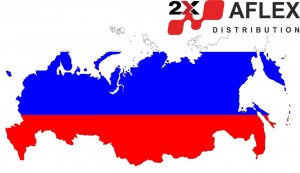VDI vs RDS: Which One is the Right Solution for Your Cloud Requirements?
The cloud computing revolution has brought significant changes to corporate networks. Today, desktop virtualization has become an inevitable option for businesses to optimize resources, provide mobility solutions, and deliver a higher level of performance. For desktop virtualization, companies can choose between VDI vs RDS either a virtual desktop infrastructure (VDI) or a remote desktop service (RDS). While both these technologies have their own strengths and weaknesses, they have a specific purpose to deliver and businesses need to choose the right solution for their desktop virtualization requirements based on their present and future business needs. VDI vs RDS
revolution has brought significant changes to corporate networks. Today, desktop virtualization has become an inevitable option for businesses to optimize resources, provide mobility solutions, and deliver a higher level of performance. For desktop virtualization, companies can choose between VDI vs RDS either a virtual desktop infrastructure (VDI) or a remote desktop service (RDS). While both these technologies have their own strengths and weaknesses, they have a specific purpose to deliver and businesses need to choose the right solution for their desktop virtualization requirements based on their present and future business needs. VDI vs RDS
An Overview of Virtual Desktop Infrastructure (VDI)
Virtual desktop infrastructure (VDI) is a process of running user desktops inside virtual machines that are hosted on data center servers. In a VDI environment, each user is allotted a dedicated virtual machine that runs a separate operating system. This flexibility provides an isolated environment for the user. As each user enjoys a dedicated virtual machine with an operating system, they can install or uninstall applications with full or partial administration rights within the VM. A connection broker is used to manage these VMs. VDI is particularly useful when businesses have to deal with critical and confidential data. VDI vs RDS
An Overview of Remote Desktop Service (RDS)
Remote Desktop Service (RDS), a proprietary protocol of Microsoft, allows users to connect remotely to a network with a graphic user interface. While the RDS client is installed on the user system, the RDS server software is installed on the server, and a remote connection is established with one or more terminal servers. While users in the RDS network connect to the server using a VM, this VM is shared with other users and operates on the same server operating system (OS) for all users.
VDI vs RDS
VDI combines some of the best aspects of the PC and terminal services. As users connect to their personalized desktop environments, a rich user experience is provided. While VDI provides seamless delivery of desktops and applications, the fact that each user gets a separate VM creates complexity for the IT staff, wherein it has to manage multiple instances of the OS, updating and patching them. At the same time, virtualization software needs to be managed as well. The cost and complexity of the VDI environment is a concern. VDI vs RDS
On the other hand, RDS sessions involve multiple users using the same VM and server OS. As there are not many windows instances involved, managing and updating the software is easy. Moreover, less CPU and memory resources are utilized, which facilitates having more users per system. By deploying a cluster of terminal farms, organizations can provide a high availability of services. Based on the number of remote users, VMs can be created and disposed of as well. However, RDS services do not provide complete administrative rights as resources have to be shared between multiple users. VDI vs RDS
VDI and RDS offer more or less the same virtualization solutions but are designed to serve different business scenarios. In fact, VDI is a part of RDS networks. As both RDS and VDI uses Microsoft protocols, the performance levels are almost the same. Any third-party software configuration would make a difference, though. However, when it comes to user-centralized environment, RDS networks are cheaper and less complex in nature. As it involves the same management and mechanism, RDS gains a slight edge over VDI. Again, you need to consider the business requirements before choosing the right solution. VDI vs RDS
Conclusion
VDI and RDS have peculiarities that adapt to the different needs of the business but making a choice between them could be difficult for some companies. The optimal situation is to have the possibility of letting our infrastructure evolve with our needs, moving between the two paradigms without extra cost. Parallels Remote Application Server allows us to indistinctly use the two technologies, which avoids forcing the administrators to make a difficult choice at the beginning of their cloud project. Parallels is one of the leading providers of RDS-VDI solutions. The RDP client works in harmony with any hypervisor to provide a familiar user experience.
References:
